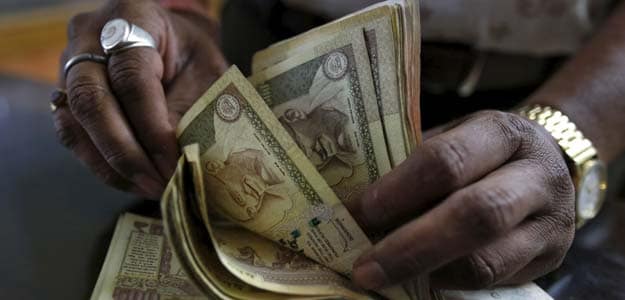RBI Nudges Rupee Weaker, as Other Currencies Slide Faster

Mumbai: The Reserve Bank of India’s has been gently nudging the rupee lower against the dollar, seeking to align it with trading partners’ weaker currencies, and reduce exporters’ suffering.
Beyond the spot dollar/rupee exchange rate, the RBI closely watches the real-effective-exchange rate (REER) – a measure of the economy’s competitiveness – and will have been uneasy with a currency that on that measure was 11 per cent overvalued in April.
Traders say the RBI has been intervening, buying up US dollars in both the spot and forward markets.
“In recent months the RBI has been allowing a gradual depreciation in sync with the REER,” said Shubhada Rao, chief economist at Yes Bank in Mumbai. “Approaching this level sans volatility should be broadly acceptable to the market.”
Traders say the rupee should theoretically be at fair value if it weakens 8 per cent from current levels around 64 per dollar, at levels closer to 70. However, they feel it is more realistic to expect the central bank to guide the rupee towards 65-66 per dollar in the coming months.
Analysts at Morgan Stanley estimated the rupee was 5.6 per cent higher than the 10-year trailing mean of its REER as of April.
That overvaluation is primarily a result of the rupee remaining resilient this year even as the euro fell about 7 per cent and yen fell almost 4 per cent against the Indian currency.
Its emerging market peers in Asia have also weakened more than the rupee has against a rallying dollar. Since the start of the year, it has slipped only 1.7 per cent compared with the rupiah’s nearly 7 per cent.
Its overvaluation has also been a fallout of India’s relatively high inflation, and a failure of the rupee to weaken at a pace that would adjust for the difference in domestic and international price rises.
While the RBI has cut interest rates three times this year to help the economy, FX data shows the central bank has been pushing the currency lower during episodes of weakness.
The rupee rose just one percent in January-March despite strong net inflows of $12.7 billion, with the central bank buying a net $27.7 billion from the spot market.
Even when the rupee declined in April by 1.5 per cent as inflows slowed, the central bank is estimated to have mopped up nearly $7 billion in spot and forward markets.
A weaker rupee would put a floor under India’s exports, which in April contracted 14 per cent from a year earlier.
It would also augment India’s foreign exchange reserves in the run up to expected interest rate rises in the United States, which will likely draw foreign capital from emerging markets.
A gradual weakening of the rupee, however, may add to inflationary pressures at a time when prospects of a weak monsoon are threatening to push up food prices.
Hitendra Dave, head of global markets, at HSBC in Mumbai says it’s difficult to know which motive is foremost for the central bank: the need for a more competitive exchange rate, aligning the rupee to its REER index or building currency reserves.
“The end outcome…is that the rupee does weaken more than what it would have based on flows,” he said.
© Thomson Reuters 2015
[“source – ndtv.com”]
